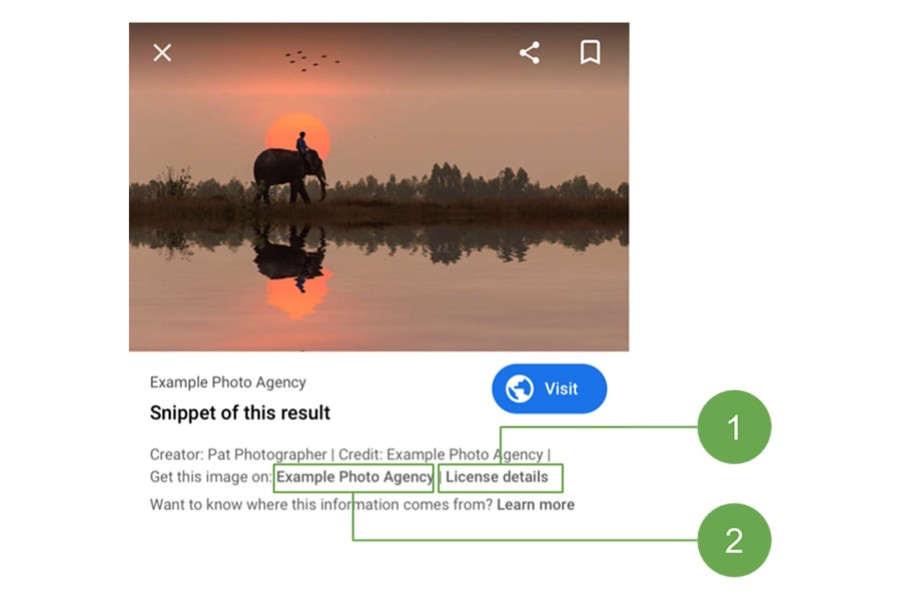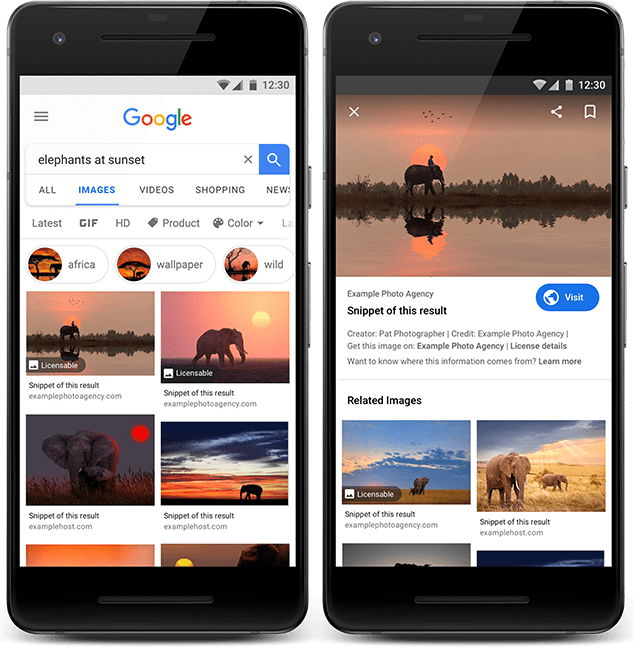Share
Selling Your Photography Just Got Easier with Google Image Licensing
I am excited about the new Google Image Licensing program, and you should be too. Let me explain why. Our job at PhotoShelter has always been to al...

I am excited about the new Google Image Licensing program, and you should be too. Let me explain why.
Our job at PhotoShelter has always been to allow photographers to display and sell their photography online. Although we have succeeded at doing this, there is one part of the process that our members also wish we could also provide: finding the buyers. (If we could wave a magic wand and make that happen, we would have!)
Since we are not a photo agency, sales and marketing of a photographer’s work is ultimately the responsibility of the photographer. Our recent SEO improvements are designed to make it easier for our members to attract interested clients, but are only one piece of a proper marketing plan.
We’ve been at this for 15 years now, and in that time many of our photographer members have seen little to no value in Google Images. We’ve even received hundreds of requests from photographers looking to block Google Images from seeing their work. From their perspective, Google Images just makes it easier for people to steal their images.
Until now. With the announcement of the new Google Image Licensing program, many of these skeptical photographers are excited about the potential it could bring. That’s why we built all of the necessary support for this program into all of the PhotoShelter Photographer websites.
What it is:
Now, Google will display a “Licensable” badge on image thumbnails in Google Images search results if that image has a usage license associated with it. This not only raises awareness of the value of an image (no, they are not all free), but it also provides a link directly to your website where a license can be purchased for its use.
This is good news, especially for independent photographers looking to sell images from their own websites. Google Images has the potential to be a main traffic and revenue source for photographers, assuming they are set up to take advantage of it.
Are you ready?
It’s not complicated, and can be done in just a few minutes. Within your PhotoShelter archive there are 2 IPTC fields that must be filled out.
1) Web Statement URL
This is a link (URL) to a page that describes the license governing an image’s use. For example, it could be a link to PhotoShelter’s Licensing Agreement page that describes the different licensing options available on the site. Or, you could create your own terms page somewhere on your website and link to that.
2) Licensor URL
This needs to be a URL to a page where the user can find information about how to license that image. For example, this could be a link to a general contact page where you can be reached so that the license could be purchased.
Once you’ve filled out those 2 fields for each image that is licensable, you should make sure each image is contained in a public gallery that the Google Bot can see and crawl. After that, PhotoShelter will take care of the rest.
You could batch process the links into these 2 IPTC fields by going gallery-by-gallery in the PhotoShelter Archive. But, if you have thousands of images that need this badge, you can email our Technical Support team with those 2 URLs and they can add them to every single image in your account.
For those not interested in the under-the-hood details, skip the next 5 paragraphs.

There are 2 ways to supply the image licensing information to Google.
Only 1 of these is needed to qualify for the badge:
1) Structured Data: This is text data embedded in the HTML of the page but is not displayed on the website. When Google sees this, they will read it and associate the data it contains with the image on the page.
PhotoShelter has embedded this structured data into all website pages.
2) IPTC photo metadata: This is data that is embedded into the image file itself. Although it is not visible in the photo itself, it travels along with the image file and can be read by applications like Photoshop, Photo Mechanic, and now, Google.
PhotoShelter has also embedded these 2 IPTC fields into the image file displayed on your website. Although we only need to supply 1 of these options, we decided to support both. One of the main reasons for this is that if your image is stolen from your website and later used on another site, a link back to your website will still be present inside of Google Images.
I super highly encourage anyone looking to sell their images to fill out these 2 fields so that they can be part of the program when it finally comes out of beta. (Which could be any week now.)
We went a little overboard with the backend support of this program. It is important to us that PhotoShelter users can tap into what may be a source of highly qualified photo buyers.
This is as close to waving that magic wand as we can get.
Update Aug 31, 2020: Google Images released their new licensable images features earlier today, which will help photographers looking to improve the discovery of their content and potentially earn more. Learn more here.


